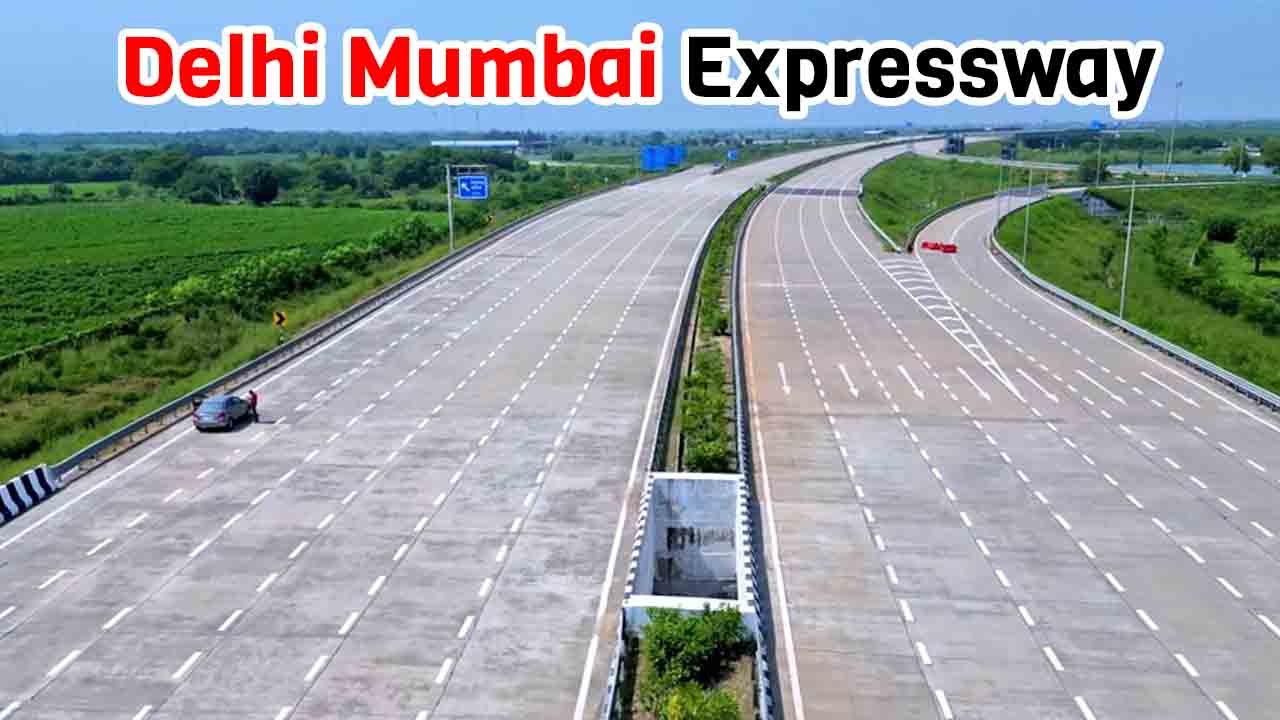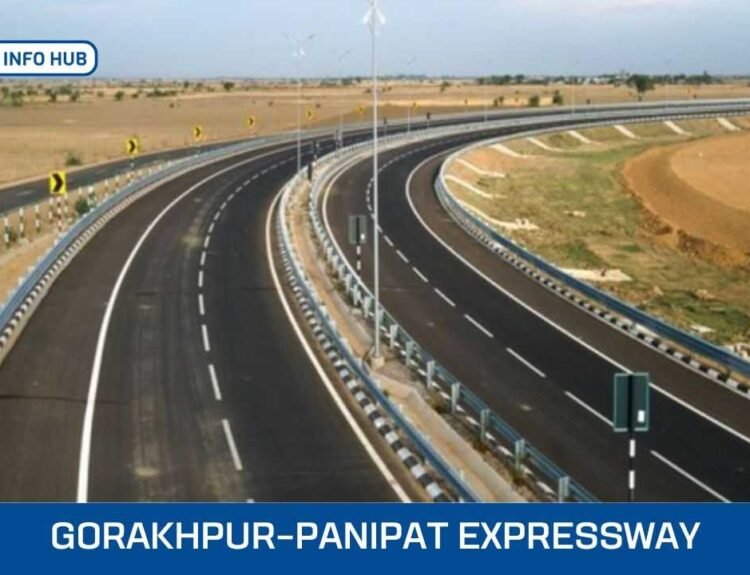The Delhi-Mumbai Expressway, an ambitious project of the Government of India, will connect the country’s two largest financial centers: the national capital, New Delhi, and the country’s economic capital, Mumbai. India’s longest eight-lane expressway, expandable to twelve lanes in the future as per traffic.
Table of Contents
- 1 Delhi Mumbai Expressway Overview
- 2 About Delhi Mumbai Expressway
- 3 Delhi Mumbai Expressway Route
- 4 Delhi Mumbai Expressway Progress
- 5 Delhi Mumbai Expressway Cost
- 6 Delhi Mumbai Expressway Completion Date
- 7 Delhi Mumbai Expressway Sections
- 8 Delhi Mumbai Expressway Key Facts
- 9 Delhi Mumbai Expressway Specifications
- 10 Delhi Mumbai Expressway Connectivity
- 11 Conclusion
Delhi Mumbai Expressway Overview
- Length: 1,350 km
- Cost: ₹1,00,000 crores
- Lanes: 8 lanes (expandable to 12 lanes)
- Starting Point: DND Flyway, Delhi and Sohna Elevated Corridor, Haryana
- Ending Point: JNPT, Mumbai MMR, Maharashtra
- States: Delhi, Haryana, Rajasthan, Madhya Pradesh, Gujarat, Maharashtra
- Speed Limit: 120 kmph
- Completion Year: June 2025
About Delhi Mumbai Expressway
The Delhi-Mumbai Expressway will be the longest in India, with a total length of 1350 kilometers. It will cost approximately 1 lakh crore to build. With its construction, the distance will be reduced from 1424 kilometers to 1242 kilometers and the travel distance between Delhi and Mumbai will be reduced by 12 percent.
There will be a fifty percent reduction in travel time also. Earlier people used to take 24 hours from Delhi to Mumbai by road, but once the expressway is ready, this distance will be covered in just 12 hours.
The Delhi-Mumbai Expressway is under construction and maintained by NHAI (National Highway Authority of India). On 12 February 2023, the Sohna-Dausa section of the Delhi-Mumbai Expressway was inaugurated. This section is open to the general public from 14 February 2023. The full Delhi-Mumbai Expressway project is expected to be completed by June 2025.
Delhi Mumbai Expressway Route

The Delhi-Mumbai Expressway will connect Delhi to Jawaharlal Nehru Port in Maharashtra via the Sohna Elevated Corridor, Dausa, Kota, Ratlam, Vadodara, Bharuch, Ankleshwar, Surat, Navsari and Virar. 12 km in the Union Territory of Delhi, 129 km in Haryana, 373 km in Rajasthan, 244 km in Madhya Pradesh, 426 km in Gujarat, and 171 km in Maharashtra. There is a 1,198 km expressway from Sohna to Virar. In addition, it has two spurs: DND–Faridabad–KMP (59 km) and Virar–JNPT (92 km), increasing its length to 1,350 km.
The expressway will start from Gurgaon, Haryana, and pass through Jaipur and Sawai Madhopur in Rajasthan, then enter at Ratlam in Madhya Pradesh, Vadodara in Gujarat and Mumbai in Maharashtra. The Delhi to Mumbai Expressway will enhance connectivity to financial hubs (such as Jaipur, Ajmer, Kishangarh, Kota, Udaipur, Chittorgarh, Bhopal, Ujjain, Ahmedabad, Indore, Surat and Vadodara).
Delhi Mumbai Expressway Progress
Prime Minister Narendra Modi inaugurated the mega road construction, its first part in Sohna in Haryana to Dausa in Rajasthan on 12 February 2023. The 246 km long route has become a significant connectivity, leading to significantly reduced travel. The travel time between Delhi and Jaipur is just two hours.
On 22 February 2024, Prime Minister Narendra Modi inaugurated the Vadodara-Bharuch section of the Delhi-Mumbai Expressway. This 87 km stretch will bring significant economic growth to Bharuch and Ankleshwar and connect major logistics hubs in Vadodara.
From 2023 till date, about 700 km of expressways have been built in Madhya Pradesh, Gujarat, and Haryana. Moreover, as per the latest study, a total of 920 km stretch of work has been completed.
This progress is expected to be completed by the end of June 2025.
Following this, the government is expediting the work to start the entire Delhi-Surat stretch in March, which will cover more than 300 km.
Delhi Mumbai Expressway Cost
The construction of the Mumbai-Delhi Expressway, including the cost of land acquisition, will cost approximately Rs 1,00,000 crore. It has been implemented as per the Phase-1 plan of the Bharatmala Project. According to the government announcement, the total construction area will be 1200 km out of the 1380 km awarded and under construction as per the contract.
Delhi Mumbai Expressway Completion Date
The Delhi-Mumbai Expressway is expected to be completed by the end of June 2025. Upon completion of the Delhi-Mumbai Expressway, the journey from Mumbai to Delhi will be reduced to less than 12 hours.
The National Highways Authority of India (NHAI) has notified proposals for an Advanced Traffic Management System (ATMS) on e-ways. NHAI has installed several ATMS systems on national highways across the country. These devices will help in implementing an Intelligent Transport System on the highways of the country. ITS will help make road travel convenient and sustainable, make roads safer, and ensure stress-free travel.
Delhi Mumbai Expressway Sections
- Delhi Mumbai Expressway Section 1: DND-Faridabad-KMP Route: 59 km (9 km in Delhi and 50 km in Haryana)
- Delhi Mumbai Expressway Section 2: Sohna–KMP–Vadodara Route: 845 km (79 km in Haryana, 373 km in Rajasthan, 244 km in Madhya Pradesh and 149 km in Gujarat)
- Delhi Mumbai Expressway Section 3: Vadodara–Virar Route: 356 km (277 km in Gujarat and 79 km in Maharashtra)
- Delhi Mumbai Expressway Section 4: Virar–JNPT Route: 92 km (92 km in Maharashtra)
Delhi Mumbai Expressway Key Facts
- It is the longest expressway in India.
- The Delhi Expressway reduces the travel time from Mumbai between these two major cities by 12 percent, from 1,424 to 1,242 km.
- Traveling from Delhi to Mumbai Expressway will take 24 to 12 hours between Mumbai and Delhi.
- The recently launched Sohna-Daus route has reduced the travel time between Gurugram and Jaipur by two hours.
- This includes Delhi, Rajasthan, Haryana, Gujarat, Madhya Pradesh and Maharashtra.
- The Delhi Expressway connects Mumbai to major cities with more than 40 interchanging points.
- It has a dedicated corridor to install the solar power generation system, optical fiber cables, and pipelines.
- It has more than 2,000 water recharge points and over 94 on-route facilities.
Delhi Mumbai Expressway Specifications
- E-expressway: The Union Ministry said that some parts of Delhi Mumbai Expressway will be made electric expressway or e-expressway. Buses and trucks can run on this road at a speed of 120 km/h. The lack of congestion and speed on the expressway will virtually reduce logistics costs. 70% of heavy vehicles will use electricity instead of diesel. It will have four of the eight lanes dedicated for all-electric vehicles along the entire route of the expressway. For safety reasons, a 1.5-meter-high barrier will be built on both sides of the expressway road inside the toll plaza slip lane.
- Roadside Amenities: It will have many roadside amenities, such as hotels, ATMs, food courts, Burger King, Subway, McDonald’s, etc., along with retail shops, fuel stations, and single-brand food stores at around 93 locations. Mumbai to Delhi will be the first expressway to have a fully equipped trauma center and helipad every 100 km to provide medical assistance to accident victims and charging stations for electric vehicles.
- Optic Fiber Network: The Ministry of Road Transport and Highways is enabling an optic fiber cable network on the Delhi Mumbai Expressway. It is included in the National Broadband Mission (NBM) of India. Telecom connectivity will increase through an optic fiber cable network.
- Environmental Aspects: The Expressway will be eco-friendly, covering around 20 lakh trees. These trees will be watered every 500 meters through a drip irrigation (rainwater harvesting) system. Tree plantation on the expressway will reduce carbon dioxide emissions by about 850 million tonnes. This project will save approximately 30 liters of fuel by reducing traffic. A combination of solar power and the state grid will be used to operate roadside lights on the Delhi-Mumbai Expressway.
Wildlife crossing: The Delhi Mumbai Expressway will be eight lanes wide and will have a collective length of about 1350 km. It will have five natural wildlife crossings: Mukundara National Park, Ranthambore National Park, and Sariska Tiger Reserve. The tunnels will be built in Mukundara National Park and Matheran eco-sensitive area, which will be the first eight-lane wide tunnels in India. The country’s first animal overpass or bridge will be built on the longest Delhi-Mumbai Expressway, which will keep the wildlife safe from the project construction.
Delhi Mumbai Expressway Connectivity
- The DND Flyway in Delhi and the Western Peripheral Expressway in Haryana will connect it to the Delhi Amritsar Katra Expressway.
- Paniyala-Barodameo Expressway will also be available in this. It is a 6-lane access-controlled greenfield road covering 86.5 km from Paniyala (south of Narnaul) to Mator, Alwar, and Barodameo.
- 136 km long The Kota-Indore Expressway will connect the Delhi-Mumbai Expressway via Nanded-Akola-Omkareshwar-Indore. It will connect the states of Rajasthan, Madhya Pradesh, Maharashtra, and Telangana to the Mumbai Nagpur Expressway at Akola.
- Vadodara-Ankleshwar Expressway is being built in Gujarat to improve the connectivity of the state. It will also be connected to the Ahmedabad-Vadodara and Ahmedabad-Dholera Expressways.
- Ultimately, the Delhi-Mumbai Expressway will also be connected to the Mumbai-Nagpur Expressway and the Mumbai-Pune Expressway, providing better transportation options to Maharashtra.
Conclusion
Delhi Mumbai Expressway will have a separate lane for e-lane (electric vehicles), hence it will be the first expressway of its kind. The Delhi-Mumbai Expressway can be expanded from eight lanes to twelve lanes. The 1,350-km expressway will cover cities like Sohna, Alwar, Dausa, Sawai Madhopur, Kota, Mandsaur, Ratlam, Dahod, Vadodara, Bharuch, Surat, Navsari, Valsad, Virar and Mumbai. Also, there will be the first e-way consisting of five cattle bridges. The main attraction of this expressway will be the four km long tunnels passing through Mukundara National Park and the Matheran eco-sensitive zone. The Delhi-Mumbai Expressway, which has eight lanes, is expected to be completed by June 2025.










